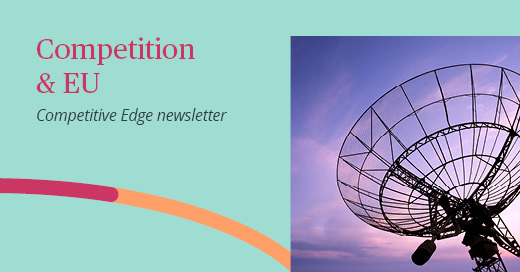How To Avoid Trademarks Being Determined As Deceptive
Article 10(1)(vii) of the PRC Trademark Law stipulates that: “a logo may not be registered as trade mark under any of the following circumstances: … (vii) which is deceptive and can easily mislead the public about the product quality, place of origin or otherwise”. When receiving the notification of rejection issued by the National Intellectual Property Administration (CNIPA) for the reason under Article 10(1)(vii), a trademark applicant usually cannot help but feel confused about why the proposed mark to be used for lawful business is determined as deceptive. What is a deceptive mark? How to avoid a mark being determined as deceptive?
The first thing to understand is that the term “deceptive” under the PRC Trademark Law is not a judgement on the meaning of a mark itself. Instead, it should be comprehensively considered in combination with various factors such as the goods/services using the mark and the actual use of the mark. A mark may be determined as deceptive on the condition that the mark “can easily mislead the public about the product quality, place of origin or otherwise”. It seems that a mark would be determined as deceptive by strict criteria. In judicial practice, however, trademark applications were often rejected for the reason under Article 10(1)(vii) of the PRC Trademark Law. The case statistics from Darts IP, a professional intellectual property database, also show that only about 17% of all the rejected trademark applications were in the end approved in China through the review of rejection, first instance and/or second instance proceedings.
We will discuss how to avoid marks being determined as deceptive with specific examples below.
I. Marks are determined to easily mislead the public about the content, quality, raw material of goods/services and otherwise
1. Misunderstanding about the scope of service
Example 1: why the two rulings on the same mark “ ” were completely different?
” were completely different?
The applications for registration of the disputed marks designated in classes 41 and 44 were both rejected for the reason of deceptiveness. Beijing Higher People’s Court issued completely different rulings on the two administrative disputes over review of rejection after comprehensively considering the meaning of the disputed marks and their relevance to the designated services in determining whether the disputed marks were deceptive. Since the designated services under class 44 include “rest homes; beauty services” which are relevant to theoretical knowledge and technical measures in the sectors of healthcare, medicine, medical skill, medical knowledge, etc., the disputed mark was deceptive and should not be registered. The designated services under class 41 include “training; fitness instruction courses” which are irrelevant to medical schools or not strongly connected with medicine or healthcare, so the disputed mark was not deceptive.
It can be seen from the above cases that whether a mark itself is deceptive should be determined in combination with the designated goods/services. Any words directly referring to the designated goods/services should be avoided in a mark.
2. Misunderstanding about the product quality
Example 2: why “ ” was not approved while “
” was not approved while “ ” was approved?
” was approved?
In reviewing the administrative dispute over the rejected application of “ ”, Beijing Higher People’s Court considered that since “橙皇” could be construed to refer to the fruit grade of oranges and its use on the designated goods would easily mislead the public about the quality of the fruit that may not be consistent with its characteristics, the mark was deceptive. With regard to “
”, Beijing Higher People’s Court considered that since “橙皇” could be construed to refer to the fruit grade of oranges and its use on the designated goods would easily mislead the public about the quality of the fruit that may not be consistent with its characteristics, the mark was deceptive. With regard to “ ” which contains the word “国”, meaning the national level, Beijing Higher People’s Court considered that since “国” was not the first word of the disputed mark, it was not adequate as a whole to mislead the public about the content, quality or origin of the designated services and accordingly was not deceptive.
” which contains the word “国”, meaning the national level, Beijing Higher People’s Court considered that since “国” was not the first word of the disputed mark, it was not adequate as a whole to mislead the public about the content, quality or origin of the designated services and accordingly was not deceptive.
It can be seen from the above cases that a mark containing any word referring to quality grade might be considered deceptive. Any of such words should not be used prominently in a mark, so as to avoid the mark being determined as deceptive.
3. Misunderstanding about the raw materials
Examples 3: honey containing no selenium and honey containing crystal sugar, how to determine the deceptiveness of each of them?
Selenium is a kind of trace elements good for human health, and selenium-rich honey has high nutritive value. When you see a honey product bearing the mark “ ”, do you believe that the honey is rich in selenium? The examiner believed so. Therefore, the mark “
”, do you believe that the honey is rich in selenium? The examiner believed so. Therefore, the mark “ ” was considered deceptive. By contrast, the mark “
” was considered deceptive. By contrast, the mark “ ” was successfully registered because the product itself did contain the ingredients of “crystal sugar” and “honey” and did not cause misunderstanding to the relevant public.
” was successfully registered because the product itself did contain the ingredients of “crystal sugar” and “honey” and did not cause misunderstanding to the relevant public.
It can be seen from the above cases that inclusion of the name of raw materials in a mark would not definitely lead to the result that the mark is determined as deceptive. Through analysis of the raw materials of the designated goods, if it can be proven that the product contains the corresponding ingredient, the mark is more likely to be successfully registered. However, it is worth noting that the former Trademark Review and Adjudication Board once discouraged registration of any mark containing words representing some trace elements and nutrients beneficial to human body such as “selenium” and “peptide” on food products, medicine and similar daily necessities. These words should be avoided in trademark applications.
II. Marks are determined to easily mislead the public about the origin or source of goods/services
Example 4: Is the company name deceptive when being used as a mark?
Chunli Catering Management Co., Ltd.’s application for trade mark registration of “ ” was rejected by Beijing Higher People’s Court for the reason that the proposed mark was not the same as the applicant’s company name. In this case, use of such mark on the designated services would easily mislead the relevant public about the source or quality of services and cause deceptive consequences. With regard to Shanxi Investment Group’s application for trade mark registration of “
” was rejected by Beijing Higher People’s Court for the reason that the proposed mark was not the same as the applicant’s company name. In this case, use of such mark on the designated services would easily mislead the relevant public about the source or quality of services and cause deceptive consequences. With regard to Shanxi Investment Group’s application for trade mark registration of “ ”, Beijing Higher People’s Court determined that despite certain differences in the words between the proposed mark and the applicant’s company name, “Shantou Group”, being the abbreviation of Shanxi Investment Group had gained a high popularity after it was being used. A relatively stable correspondence has been formed between “Shantou Group” and Shanxi Investment Group. Therefore, the proposed mark was not deceptive.
”, Beijing Higher People’s Court determined that despite certain differences in the words between the proposed mark and the applicant’s company name, “Shantou Group”, being the abbreviation of Shanxi Investment Group had gained a high popularity after it was being used. A relatively stable correspondence has been formed between “Shantou Group” and Shanxi Investment Group. Therefore, the proposed mark was not deceptive.
It can be seen from the above cases that it does not matter if a mark contains the company name, as long as the applicant can prove that the company name directly refers to the applicant itself. This requires that not only the applicant has gained a certain popularity but also a stable correspondence has been formed between the proposed mark and the company name. It is worth noting that the former Trademark Review and Adjudication Board once discouraged registration of any mark containing the full company name for the reason that the full company name would not be recognized as trade mark by consumers and thus constitutes the circumstance of lacking distinctiveness under Article 11(1)(iii) of the PRC Patent Law.
According to the above examples, if a trade mark application is rejected for the reason that the mark is deceptive by the word meaning itself, the problem is possible to be overcome. Determination of a deceptive mark is affected by the relevance of the mark to the specification of the designated goods/services, the raw materials actually contained in the goods, the popularity of the mark through use and other factors.
In conclusion, for trademark applicants, inclusion of words referring to quality of the designated goods/services in a mark can obviously catch the attention of the relevant public to the mark and designated goods/services. However, such words should be prudent, suggestive or used in combination with other elements, so that the mark is not deceptive as a whole, thereby lowering the risk of being considered deceptive. In the event that the mark is determined as deceptive, the applicant may defend itself by presenting trademark descriptions, raw materials of the goods, documents supporting trade mark popularity and other evidence during the review of rejection procedures. Since Article 10(1)(vii) of the PRC Trademark Law is prohibitive in nature, if a mark cannot be successfully registered under Article 10(1)(vii), the mark cannot be put into practical use; otherwise, administrative penalties will be imposed by the competent authorities.
Reference cases:
1) (2020) Jing Xing Zhong No. 2212
2) (2020) Jing Xing Zhong No. 2215
3) (2019) Jing Xing Zhong No. 10084
4) (2019) Jing Xing Zhong No. 9493
5) Shang Ping Zi [2020] No. 0000081597
6) (2019) Zui Gao Fa Xing Zai No. 249
7) (2020) Jing Xing Zhong No. 2581
8) (2019) Jing Xing Zhong No. 7268
9) “New Trends in the Trial by Trademark Review and Adjudication Board”, 24 April 2018




